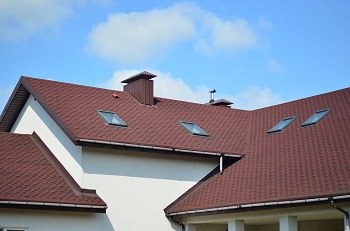
The roof is one of the most important parts of every building. It not only adds to a structure’s visual appeal, but it provides important protection from all of the elements. Many people know that they have to maintain their roof to ensure its integrity, but knowing when to bring in an experienced roofing contractor to give your roof a thorough inspection can be difficult. While some maintenance issues and signs of wear are obvious, others can be harder to spot without some education. No matter what kinds of issues your roof may have, if they are not properly treated, a small issue can result in significant costs later.
Knowing the early symptoms and hidden signs of roof failure can help you make sure everything stays safe and up to code. Read on to learn tips on how to recognize when to bring in some licensed roofing professionals before any major, potentially disastrous problems arise.
1. Leaks & Moisture Damage
The most obvious sign of roof failure is any indication of leaking water — even if it doesn’t look like it’s coming from the roof. Always keep an eye out for signs of moisture damage throughout your home or office building. Damp spots may appear on the ceiling, or you could even see water spots forming on walls from moisture that is seeping in.
The leaks could be caused by small holes in the roof,contributing to the build-up of attic moisture, or larger holes that are letting in rain water. Both can be signs of major issues and should be addressed by professional contractors as soon as possible. The contractor may advise the leak be plugged with rubber spray or suggest a more serious overhaul.
2. Light Getting into the Attic
Water and condensation aren’t the only things that can leak through a failing roof; sunlight can creep in as well. If you suspect there may be an issue with your roof, spend some time walking around the attic on a sunny day. Any spots where light is coming through need to be fixed immediately. Otherwise the can lead to a number of potential issues that include water damage, wild animals getting in, or even ventilation problems.
3. Paint that is Blistering or Looks Damaged

If you notice the paint on your building is looking excessively cracked or peeling to a large degree, it’s time for a roof inspection. This is a sign of roof failure that can appear on either interior or exterior paint, especially around the roof line. Damaged paint can also be evidence of a buildup of moisture as a result of poor attic ventilation.
4. Shingles that are Cracked or Curling
The shingles on your building’s roof have a limited lifespan, whether they’re made from wood, ceramic, or other materials. As the shingles near the end of their life, you may notice splits, curling edges, or even cracks. Dry shingles that are brittle enough to break upon touching are also a hidden sign of roof failure and indicate your shingles need to be replaced soon. Only by removing the shingles and installing new ones will you be able to avoid major issues and the work should be completed before problems begin.
5. Missing, Loose, and Unsecured Shingles
Your structure’s roof has to withstand a lot of elements, including high velocity winds. Besides violent storms, harsh winters can also take a significant toll on your roof. This can result in loose or unsecured singles, or even completely missing shingles. If you spot a few missing shingles, this is another sign that they have reached the end of their life. It won’t be long before more of them become detached and your attic is exposed to damaging weather and other elements.
6. Overflowing Gutters and the Appearance of Granules
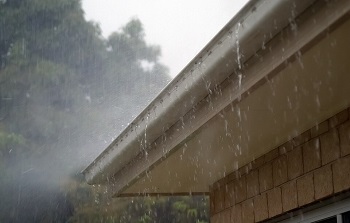
When your roof is unable to deflect water properly, it can cause major issues for your gutters. Excessive gutter overflow following a rainstorm can be an indication that your roof may be in need of repair. When overflow happens, take a walk around the foundation of your structure and look for large amounts of water collecting or any signs of granules. Both are a straightforward sign that your shingles are wearing out and that your roof needs to have work done.
Sometimes, gutter overflow is caused by a buildup of leaves or debris. Consistent gutter cleaning will go a long way to maintaining the integrity of your gutters and protecting your roof.
7. Nails that are Loose or Exposed
As a roof ages, the materials it is made from will gradually wear away and signs of roof failure become easier to spot. One of the more obvious symptoms of aging is the nails that are used to secure your roof. When theses nails begin to age, it creates areas that pop up. This then creates holes in your roof. That leads to moisture collecting in between the shingles, potentially opening your building up to leaks, as well as a host of other structural issues.
8. Damaged or Missing Flashing
Flashing is the material that joins sections of your roof together. It an important component of any structure, as it prevents water from damaging the joints of your roof. Just like with nails that wear away, when flashing ages, it can fall off from your roof. This will compromise the weatherproofing of your roof and allow for water to easily penetrate into the attic or inside of walls. It can even lead to chimney failure. Keep an eye on your roof’s flashing as another sign of roof failure to help prevent more significant issues from occurring.
9. Areas of the Roof that Look Dirty
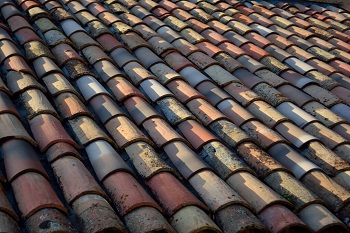
Depending on the type of materials that your roof is made of, your roof can lose its cosmetic appeal as it ages. The earliest and most obvious warning sign is often discoloration. While it can be difficult to tell whether the change in appearance is the first sign of roof failure or just a buildup of dirt, any change in appearance should warrant a closer inspection.
Changes in color are often an early indication of the buildup of environmental pollutants, vegetation, fungus, algae growth, or the loss of protective granules. Any of these issues can lead to significant structural problems and should be handled as quickly as possible.
10. Signs of Buckling & Sagging
A roof that is buckling or sagging can be pretty easy to spot once you know what to look for. However, this is not an issue that will occur overnight. Once the problem becomes significant enough to be noticeable you may have a roof that has been dealing with issues for years. Roofs can sag on the slope or ridges, or you may notice sagging between the rafters in the attic. This is definitely a common issue with roofs that are older and were built using rafters instead of trusses.
11. Roofs with More Serious Caving
Instead of a gradual sagging or buckling, your roof may experience a far more serious issue: caving. This is a significant sign of roof failure and a structural issue that must be addressed immediately. Caving occurs when the internal structure of a roof does not receive enough attention. Any damage that is indicative of a caving, such as damage to trusses and framing, need to be remedied — or else you risk a complete structural collapse.
12. Clues from your Attic the Roof Has Issues
If you can’t get up onto your roof or do a thorough inspection from the ground using binoculars, then walking around your attic can be a big help. Signs of roof failure will crop up just as readily on your attic’s ceiling as on the roof itself. Things to look for when examining an attic include a sagging roof deck, dark spots or trails, and sunlight shining in from the outside. It is also important to pay attention to all of the insulation in the attic. If you spot any insulation that is stained, matted, or crusted this is a sign that your roof has immediate issues.
Sometimes insulation is damaged by animals that have found their way inside, while other times it can be ruined by weather or age.
13. Signs of Roof Layering
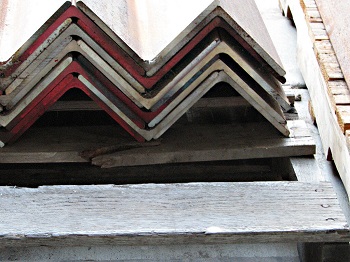
A trend that has become popular with some contractors is to layer roofs by adding new materials over existing ones to increase structural integrity. This re-roofing technique is offered by some companies as a way to cut down on costs and time instead of performing a total tear off and completing a new roof installation.
While going with this strategy may cut down on short-term costs, it’s not a method that is recommended by most contractors. The additional weight of this style of work can actually cause even more significant structural issues later for buildings that were not designed to support all of the additional weight.
14. Drastic Changes in Utility Bills
Throughout the year you can expect fluctuations in your heating and cooling utility bills. Any changes that are drastic, however, are signs of roof failure and usually indicate that a significant roofing issue is at hand.
Leaks or holes in a roof can cause colder air to seep in during the winter, which drives up heating costs. The same goes for hot air getting in during the summer and increasing air conditioning bills. Utility costs can also be significantly increased by insufficient attic ventilation, which causes heating and cooling systems to run excessively. This will drive up the costs to maintain a comfortable temperature inside even more.
15. Always Check the Roof’s Age When Possible
Whether you have just bought a home or are looking at the roof of a commercial property you own, it’s important to know as much of the history of the structure as possible. While it’s not always easy to know everything about your building’s lifespan, finding out how long ago a roof was installed is one of the easier areas to identify. If you can, try and find out when the last time the roof was replaced. If it’s been more than 20 years, the chances for structural issues will go up dramatically. Take the opportunity to call in a reliable contractor and have them take a look at your structure’s roof before any serious issues come up.
Managing Your Roof
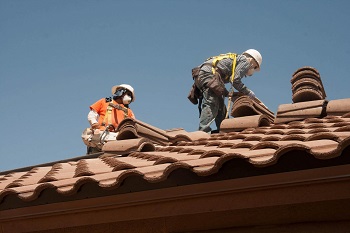
Changes in your roof or the interior of your building don’t just happen on their own. Many of the issues that are caused by a failing roof will appear slowly over time and can be easy to miss if you don’t know what to look for. However, if you stay watchful and keep an eye out for the issues outlined here, then it will be much easier to spot small issues before they turn into major structural challenges.
When those issues do occur, it’s important to contact a licensed and bonded roofing contractor like CHR&R immediately. Only by getting a thorough inspection and some extra assistance will you be able to have absolute peace of mind. Many contractors offer free inspections and custom plans, so there’s no reason to ignore any signs of roof failure!